How We Restructured Airtable’s Entire Org for AI
Airtable transformed its organizational structure for the AI era by dividing teams into ‘fast-thinking’ units focused on rapidly shipping weekly AI features, and ‘slow-thinking’ teams dedicated to long-term infrastructure. CEO Howie Liu became an ‘IC CEO,’ coding daily and championing direct experimentation with AI. Employees are encouraged to play with AI tools and build essential skills, moving away from an over-reliance on evaluations.
https://www.lennysnewsletter.com/p/how-we-restructured-airtables-entire-org-for-ai
By Howie Liu & Lenny Rachitsky
Finding Geometry in the Humanities
A cross-disciplinary group at the Santa Fe Institute explores how mathematical and computational methods can illuminate the humanities, turning texts and cultural artifacts into digital forms that reveal new geometric and statistical insights. By bridging mathematics and humanistic inquiry, their work uncovers new patterns in literature and culture through the lens of geometry and computation.
https://santafe.edu/news-center/news/finding-geometry-in-the-humanities
By Daniel Rockmore
Marketing Is: Genuine Enthusiasm vs. Fears and Dishonesty
Marketing is at its best the transfer of genuine enthusiasm—at its worst, the spread of fears and dishonesty. Everything you do is marketing, and your true intent or any false fronts will always shine through. The impact that lasts is created by caring—whether that’s by sharing excitement or by making things right.
https://world.hey.com/jason/marketing-is-8d39f651
By Jason Fried
New Worlds, Old Biases: Psychology and AI
New research reveals how AI not only amplifies human biases but also blurs reality, sometimes with dire impacts like affirming delusions or worsening mental health. Insights on heuristics—like the representativeness bias—show how stereotype-based AI decisions have tangible effects, from jobs to justice. Only by keeping humans “in the loop” can we safeguard critical thought, creativity, and ethical outcomes.
https://www.behavioraleconomics.com/new-worlds-old-biases-psychology-and-ai/
By Peter Hughes
Senior Leaders Still Need Learning and Development
Senior executives often lack structured onboarding and ongoing development, leaving them isolated and at risk. The article urges organizations to protect performance and well-being by providing tailored support for top leaders—executive onboarding, peer coaching, regular reflection, targeted feedback, and mentorship.
https://hbr.org/2025/10/senior-leaders-still-need-learning-and-development?ab=HP-hero-latest-2
By Marlo Lyons
No, You Don’t Get an A for Effort
Many students today expect grades to reflect effort instead of achievement. This article argues that high grades should be reserved for excellence and mastery, not just participation or hard work, challenging the misconception that effort alone deserves top marks and emphasizing the importance of true educational achievement.
https://www.nytimes.com/2024/12/26/opinion/school-grades-a-quantity-quality.html
By Adam Grant
How I write. (Preface to the 15th year Italian edition of The Black Swan)
True literature is idiosyncratic and robust, unconstrained by genre or passing trends. Enduring writing links the present to the past—showing Lindy Effect resilience. Creative work must maintain its solemnity and distinctive voice, resisting routine and the pursuit of novelty. For Taleb, literature is a personal, almost sacred task, best measured by its power to connect with readers across eras. Lasting work favors timeless principles over speculation, ensuring meaning and resonance beyond its time.
https://medium.com/incerto/how-i-write-8b495eae0330
By Nassim Nicholas Taleb
Going viral: How ideas, beliefs, and innovations spread in the digital age
A new mathematical model reveals that viral cascades don’t require critical tipping points—while most ideas quickly fade, a select few evolve both in content and intensity as they propagate, fueling highly unpredictable social contagion at scale and challenging conventional wisdom about how information spreads.
By Laurent Hébert-Dufresne, Juniper Lovato, Giulio Burgio, James P. Gleeson, S. Redner, and P. L. Krapivsky
The Role of Behavioral Science in UX Design (2025 Guide)
Explores how behavioral science principles—such as cognitive load, Hick’s Law, and habit-formation—inform intuitive and ethically engaging UX design. Fatima highlights how understanding psychology drives higher conversions, improved navigation, and stronger user retention. Practical examples and actionable tactics guide designers in balancing persuasive techniques with user well-being in 2025’s design landscape.
https://inbeat.agency/blog/behavioral-science-in-ux-design
By Sehar Fatima
AI Coaching for Future Leaders
Explains how AI-driven, personalized leadership coaching is transforming the way future leaders are developed—scaling competency-building across organizations by harnessing behavioral science for skills like emotional intelligence and adaptability. The post covers how AI coaching offers scalable, data-driven, and real-time feedback, filling gaps traditional programs can’t reach. It highlights the complementary power of AI-augmented and human coaching to ensure measurable leadership impact for the next era.
https://www.retorio.com/blog/ai-coaching-future-leaders
By Retorio
